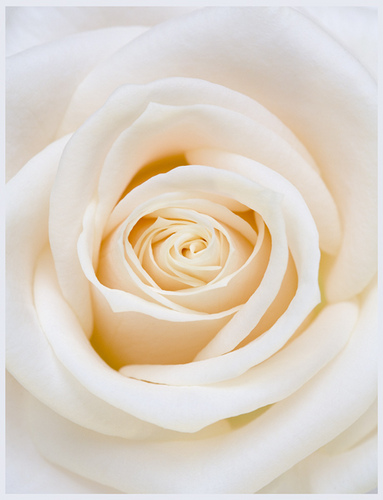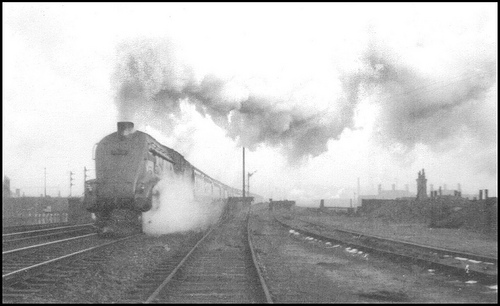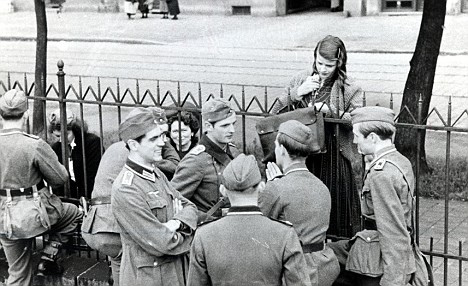Jasmina Tacheva

Photo: Harley~Quinn
Sophie Scholl (9 May 1921 – 22 February 1943) was a member of the White Rose non-violent resistance movement during the Nazi regime in Germany. She was arrested on 18 February 1943, convicted of treason four days later, and executed by guillotine a few hours after that.
I’ve been thinking of a story from the Old Testament: Moses stood all day and all night with outstretched arms, praying to God for victory. And whenever he let down his arms, the enemy prevailed over the children of Israel. Are there still people today who never weary of directing all their thinking and all their energy, single-heartedly, to one cause?
As quoted in Seeking Peace: Notes and Conversations Along the Way (2000) by Johann Christoph Arnold, p. 155

Photo: juffrouwjo
The National Socialists and their helpers murdered more than 130 000 Germans, incarcerated hundreds of thousands in concentration camps and prisons and interrogated and tortured more than a million people through the Gestapo.
During their medical studies in 1941/42, young Christoph Probst and Alexander Schmorell, friends since their schooldays, met Willi Graf and Hans Scholl at the University of Munich. They came into conflict with the Hitler Youth and refused to join. Instead, they sought contact with various contemporary authors whose books were either banned or denied publication and thus – propagated underground.
As medical students, they were sent to different places during the war. Through letters, however, they managed to maintain constant correspondence with like-minded people back home. Hence, the circle of friends grew closer and started exporessing its liberal views by taking part in various cultural activities.
By the middle of 1942 the members of the group had already realized the need for decisive action. In June of that year Alexander Schmorell and Hans Scholl started disseminating the four “Leaflets of the White Rose”.

Photo: Garter Blue
…We emphatically point out that the White Rose is not in the pay of any foreign power. Although we know that the National Socialist power must be broken by military means, we seek the revival of the deeply wounded German spirit. For the sake of future generations, an example must be set after the war, so that no one will ever have the slightest desire to try anything like this ever again. Do not forget the minor scoundrels of this system; note their names, so that no one may escape…We shall not be silent – we are your bad conscience. The White Rose will not leave you in peace…
The Fourth Leaflet of The White Rose
In July 1942, upon returning from the Eastern front where the group was sent, the fifth leaflet “Appeal to all Germans!” appeared.
After its first major defeat in the battle for Stalingrad the German population was greatly shaken which served as an incentive for the group to publish their final leaflet – “Fellow Students!” In the beginning of 1943 provocative slogans written with coal tar such as: “Down with Hitler!” and “Freedom!” could be seen on the walls of the University of Munich.
This accomplishment becomes even more remarkable when we remember that Munich was referred to as the Hauptstadt der Bewegung (“Capital of the Movement”) because of its importance to the rise of National Socialism. Moreover, as early as 1920 Albert Einstein was not permitted to lecture at the University of Munich – a sure sign of the extreme right-wing populist, anti-Semit views that had started to prevail there after the outcome of the First World War.
As a result, on May 10, 1933, the student body distributed invitations and tickets for the “Book-Burning Action at Königsplatz”. The “Law for Restoration of the Permanent Civil Service” adopted in April 1933 removed the majority of Jewish professors and teaching assistants from the University. Many of them emigrated; others chose to end their lives. At the same time, Nazi propaganda strarted to advise young women to bear children for the Führer instead of continuing their studies at the University. This message ignited a wave of student protests in which Hans and Sophie Scholl took active part.

Photo: juffrouwjo
Some of the Members of the White Rose
Willi Graf was born on January 2, 1918 in Kuchenheim in a Catholic family. He joined the “Grauer Orden” in 1934 – an organization banned by NSDAP that was striving for justification of the Christian Church. Due to his participation in illegal meetings, Graf was accused of subversive activities of the Youth Movement and sentenced to 6 months of compulsory National Labor Service. In January 1940 he was forced to join the “Wehrmacht” as a medical orderly in former Yugoslavia, Poland and Russia where he witnessed the atrocities committed against Jews. In July 1942 he was forced to join the “Feldfamulatur” at the Eastern front together with Hans Scholl and Alexander Schmorell. Upon their return to Munich in 1943, they were already resolved to take decisive action against the regime. After the imprisonment of the Scholl siblings, Willi Graf and his siter, Anneliese, were arrested in their appartment on February 18, 1943. He was guillotined on October 12, 1943 after multiple unsuccessful attempts of the Gestapo to squeeze the names of his collaborators out of him.
Professor Kurt Huber was born on October 24, 1893 in Chur, Switzerland. An early illness left him with a slight paralysis which also affected his speech. He studied musicology, psychology and philosophy and obtained his doctor’s degree in 1917. In the summer of 1942 he came into contact with the young members of the White Rose who were also his students. He was arrested on February 27, 1943 and executed on July 13 together with Alexander Schmorell in the Munich prison Stadelheim. Until the very day of his execution, he was working on a book about the philosopher and mathematician Leibniz.
The much-loved romantic melodrama Casablanca (1942) is a masterpiece tale of two men vying for the same woman’s love. The story of political and romantic espionage is set against the backdrop of the wartime conflict between democracy and totalitarianism.
Alexander Schmorell was born in Orenburg, Russia on September 16, 1917. His mother who was Russian died when he was still a young child and his father – a Russian doctor – moved to Munich with him in 1921. After his Abitur he was forced into the National Labor Service and later into the Wehrmacht. When he was supposed to swear the oath of allegiance to Hitler, however, he refused, which made him an enemy of the Nazi regime. He started expressing his opposition by making music, drawing, sculpting and translating Russian literature. Alexander met Hans Scholl in 1940 and participated in all the activities of the White Rose since its beginning in Munich. After the arrest of the Scholl siblings he was put on the wanted list, arrested on February 24, 1943 and guillotined in Munich-Stadelheim on July 13, that same year.
Hans Scholl was born on September 22, 1918 in Ingersheim. He joined the Hitler Youth in 1933 where he became a troop leader. Disillusioned by the coarse reality of the regime, he sought contact to the then forbidden dj.1.11 – a faction with more culturally-centered ambitions than the regular youth groups.
On 18 February 1943, Hans and Sophie were spotted by a custodian while throwing leaflets from the atrium of the Ludwig Maximilians University. They were arrested by the Gestapo, accused of treason, found guilty, and condemned to death on 22 February. They were beheaded in the Stadelheim Prison, only a few hours later.
Sophie Scholl was born on May 9, 1921. She had a talent for drawing and painting and came into contact with a few of the so-called ‘degenerate‘ artists. An avid reader, she had a strong interest for philosophy and theology. Her firm Christian belief in God (she was brought up a Lutheran) and in every human being’s essential dignity formed her basis for resisting Nazi ideology. After her mandatory 6-month-long service at the National Labor Service she came to Munich where she enrolled at the University of Munich as a student of biology and philosophy in May 1942. Her brother, who was already studying medicine there, introduced her to his friends. Although the group of friends left its mark in history foremost as a political organization, they were initially drawn together by a shared love of art, music, literature, philosophy and theology.
The Nazi soldiers not only burned books, they also banned numerous German artists from hanging their works.
Although they had no real chance of accomplishing much from the outset, the White Rose students serve as a paragon of the human urge for freedom. In spite of the numerous and insurmountable difficulties they faced, they were led by a willingness to risk their lives and the lives of their loved ones for the freedom of their country and for the victims of the terrible practices of the Nazi regime.
For more information regarding the White Rose visit weisse-rose-stiftung.de











1 comment so far ↓
Nobody has commented yet. Be the first!
Comment